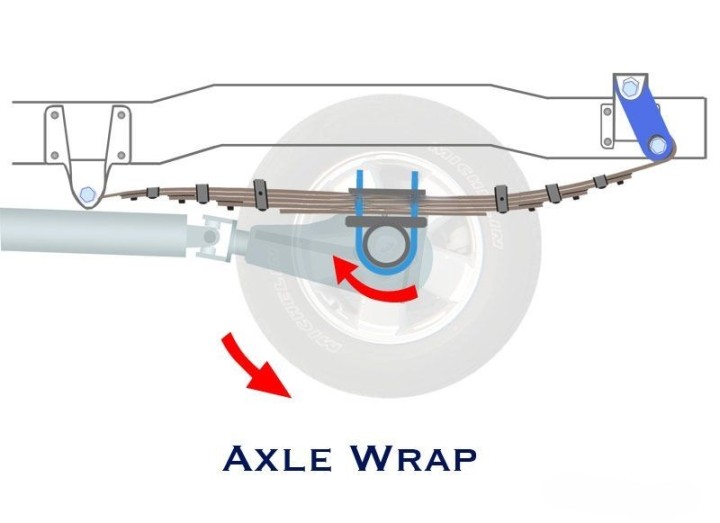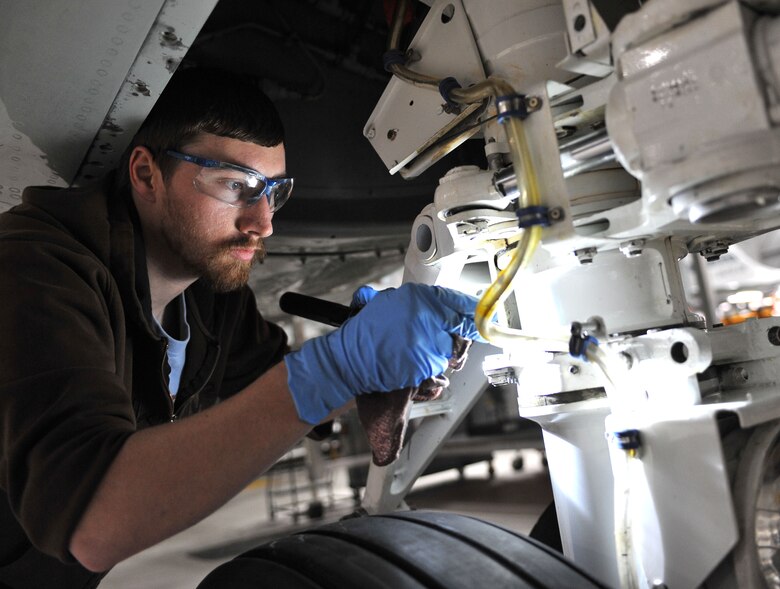Introduction
Axle wrap is a common issue in vehicles with leaf spring suspensions, particularly in high-torque applications like trucks, SUVs, and off-road vehicles. It occurs when the axle twists due to torque from the engine, causing the leaf springs to deform into an “S”

shape. This can lead to various driving issues, including vibrations, decreased handling performance, and long-term damage to the driveline components. Understanding axle wrap is crucial for vehicle owners who frequently tow, race, or off-road, as it can significantly impact the vehicle’s safety and performance.
What is Axle Wrap?
Axle wrap refers to the twisting motion of a vehicle’s rear axle, often caused by the excessive torque transmitted from the engine to the wheels. This phenomenon typically occurs in vehicles with leaf spring suspensions, where the axle rotates excessively under load, causing the springs to bend. Axle wrap is more prevalent in vehicles that are heavily modified, lifted, or subject to high-stress conditions like racing or off-roading.
The twisting force, known as torque, causes the leaf springs to distort into an “S” shape instead of maintaining their intended arc. This deformation not only affects vehicle performance but can also lead to significant damage to the suspension and driveline components over time.
Causes of Axle Wrap
Axle wrap can result from a combination of factors, including driving habits, vehicle modifications, and the overall design of the suspension system. Here are some common causes:
Suspension Geometry
The geometry of a vehicle’s suspension plays a significant role in axle wrap. Vehicles with poorly designed or modified suspension systems are more susceptible because the suspension does not adequately control the axle’s movement under torque.
- Leaf Springs: Leaf springs are particularly prone to axle wrap because they are not rigid enough to handle the twisting force of high torque.
- Lift Kits: Installing lift kits can alter the suspension geometry, increasing the likelihood of axle wrap.
Effects of High Torque
Vehicles with powerful engines, especially those modified for increased horsepower, generate significant torque that can easily overcome the suspension’s ability to keep the axle stable. High torque levels, combined with aggressive driving, exacerbate axle wrap.
- Sudden Acceleration: Rapid acceleration from a standstill can generate enough force to twist the axle.
- Off-Roading: Uneven terrains and sudden climbs place extra stress on the axle and suspension.
Symptoms of Axle Wrap
Detecting axle wrap early can prevent more severe damage. The symptoms often start subtly but can worsen quickly if not addressed.
Vibrations and Shuddering
One of the most noticeable symptoms of axle wrap is a vibration or shudder felt throughout the vehicle during acceleration. This is caused by the twisting motion of the axle disrupting the suspension’s ability to maintain contact with the road.
Uneven Tire Wear
Axle wrap can cause uneven pressure distribution on the tires, leading to irregular wear patterns. This not only shortens the lifespan of the tires but can also affect the vehicle’s handling and stability.
Driveline Noise
Unusual noises such as clunking, banging, or popping sounds during acceleration or deceleration are also indicators of axle wrap. These noises result from the axle’s movement causing excessive play in the driveline components.
Impact of Axle Wrap on Vehicle Performance
Axle wrap does more than just cause an uncomfortable ride—it can severely impact vehicle performance and safety. The increased stress on suspension and driveline components can lead to premature wear or failure.
- Handling: A vehicle with axle wrap may feel unstable, especially when cornering or during quick maneuvers.
- Safety: Uncontrolled axle movement can lead to loss of traction, making the vehicle unsafe, especially in adverse driving conditions.
How to Diagnose Axle Wrap
Proper diagnosis is crucial for addressing axle wrap before it leads to more significant problems. Here are some methods to diagnose this issue:
Visual Inspection
A thorough visual inspection can reveal signs of axle wrap. Look for:
- Leaf Spring Deformation: Check if the springs have a noticeable “S” shape when the vehicle is under load.

- Suspension Components: Inspect for worn or damaged bushings, shackles, or other suspension parts that may contribute to axle wrap.
Test Drives and Monitoring
Conducting test drives while monitoring vehicle behavior under acceleration can help identify axle wrap. Pay attention to vibrations, shuddering, and noise during different driving conditions.
Methods to Prevent Axle Wrap
Preventing axle wrap involves reinforcing the suspension system and ensuring that the vehicle setup is optimal for the intended use.
Traction Bars
Traction bars are one of the most effective solutions to combat axle wrap. These bars are installed parallel to the leaf springs and work by preventing the axle from twisting under torque.
- Functionality: Traction bars create a more rigid suspension system, reducing the chances of the leaf springs bending.
- Installation: They are relatively easy to install and are available for most truck and SUV models.
Leaf Spring Upgrades
Upgrading leaf springs to more robust models can also help in reducing axle wrap. Heavy-duty or multi-leaf spring setups provide better control over axle movement.
- Progressive Springs: These springs adjust their stiffness based on the load, offering a balance between comfort and control.
- Add-A-Leaf Kits: These kits add an extra leaf to the existing spring pack, providing additional support against axle wrap.
Proper Vehicle Setup
Ensuring your vehicle is set up correctly for its intended use is key to preventing axle wrap. This includes balancing the power output, suspension stiffness, and the vehicle’s weight distribution.
Axle Wrap Solutions
If axle wrap has already become an issue, there are various ways to address it, ranging from simple DIY fixes to professional interventions.

Aftermarket Kits
Aftermarket kits designed to prevent axle wrap include traction bars, reinforced leaf springs, and other suspension enhancements.
- Installation Ease: Most kits come with comprehensive instructions and can be installed with basic mechanical skills.
- Performance Gains: These kits not only solve axle wrap but also enhance overall vehicle stability and performance.
Professional Assistance
For severe cases or if DIY fixes are not feasible, seeking professional assistance is advisable. Mechanics can provide tailored solutions based on your vehicle’s specific needs.
Frequently Asked Questions About Axle Wrap
Is Axle Wrap Dangerous?
Yes, axle wrap can be dangerous as it compromises vehicle stability, handling, and safety. Uncontrolled axle movement can lead to loss of traction, particularly in wet or uneven conditions, posing a significant risk to drivers.
Can Axle Wrap Damage My Vehicle?
Axle wrap can cause long-term damage to the suspension, drivetrain, and tires. Over time, the continuous stress can lead to component failures, making it essential to address the issue promptly.
Are There Cost-Effective Solutions?
Yes, cost-effective solutions like traction bars, add-a-leaf kits, and proper vehicle setup can help manage or prevent axle wrap without breaking the bank. These solutions offer significant performance improvements and extend the life of your vehicle’s components.
Conclusion
Axle wrap is a critical issue for many vehicle owners, especially those who drive powerful trucks, SUVs, or engage in off-road activities. Understanding the causes, symptoms, and solutions of axle wrap can help you maintain your vehicle’s performance and safety. By implementing preventive measures like traction bars, suspension upgrades, and proper vehicle setup, you can effectively minimize the risks associated with axle wrap.


